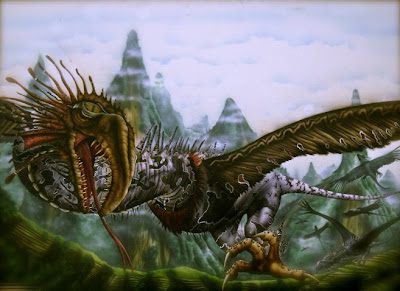What’s this
illustration for?
This
is a personal piece. I saw some great black and white street art which had loads
of attitude and fun. So I thought why not leave the colour out
for a change? I started doodling and the kids machines became more and more
absurd and the kid’s faces became more and more earnest which gave me a bit of a
laugh. Since then I’ve put in some background colour and
textures, but the characters stayed close to the original feel that I
wanted.
Do you have to
wait for a flash of inspiration - how do you
start?
Once I understand the brief I map out the basics of how the
book/project works then I just start playing around with the pencil. Making a
character look right is the fun bit, I just scribble until I get a look that
makes me smile and then that helps lead me through the project. Little bits of
inspiration happen all the way through the project.
How did you
get your start as an illustrator?
I
studied at art college then I started my career as a junior visualiser. I
moved into art direction, but I’ve always done bits and pieces of illustration.
However at one point myself and a friend wrote and illustrated a kids book. It
didn’t really eventuate but I realised that
the illustrations could form the basis for an illustration portfolio. I took
this around several publishers and started getting
work.
Who or what
has influenced your work?
I
guess the sample that I’ve chosen is atypical in that it has a bit of a paste up
graffiti sort of feel (I think). Usually though I think my favourite
influences have been mid 20th century, jazz influenced design and illustration.
But the things that appeal to me are always
changing.
What’s your favourite media for creating
pictures?
I always start with an old fashioned pencil drawing but I love
scanning it in and getting to work on the Mac. It gives you so much scope to
experiment, layer things, compare different approaches. Also if there is
anything out there better than the command Z function then I haven’t seen
it.
Do you
experience illustrator’s block - if so, what do you do about
it?
I don’t think so. If I think I’m not getting anywhere, I try
persevering for a bit, to see if I can get around it. Anyway if it’s still not
working, then that lack of enjoyment will show in the work. So it’s usually a
good idea to take some time out. Maybe go for a run. Have a banana sandwich.
Have a look through some reference material. Or all three but preferably not at
once.
But ultimately I don’t really believe in being “blocked” I just
think there are some times you can do the job better than
others.
What’s the
worst thing about being a freelancer?
Working alone. You go a bit stir crazy after a
while.
And the
best?
Whenever you’ve done a project you know that your answer is
unique. And I always feel that I’m learning and improving.
Honest.
What are you
working on at the moment?
A load of illustrations for a legal textbook. Also I’m doing some
oil painting but that’s more for my own enjoyment.
Where can we
see more of your work?
This is a long old link but here
goes:
Mal now has a website - http://www.malchambers.com/index.html





















